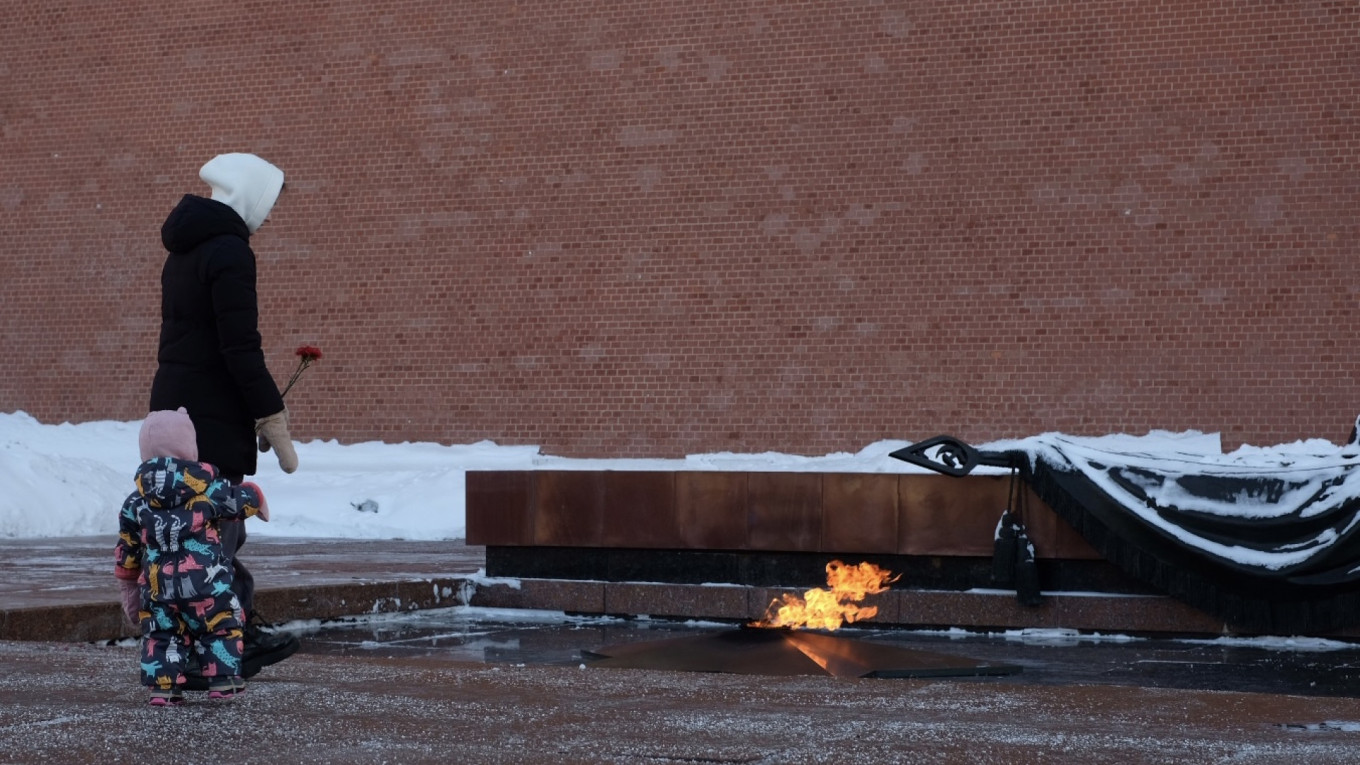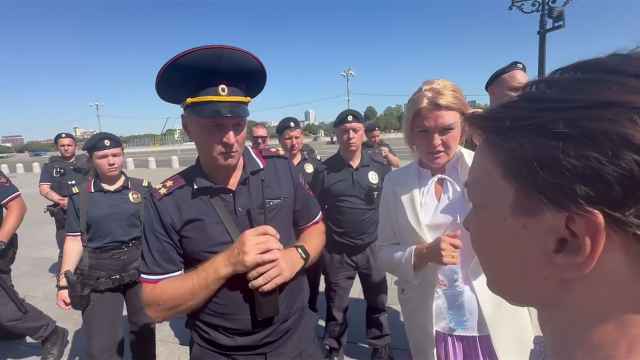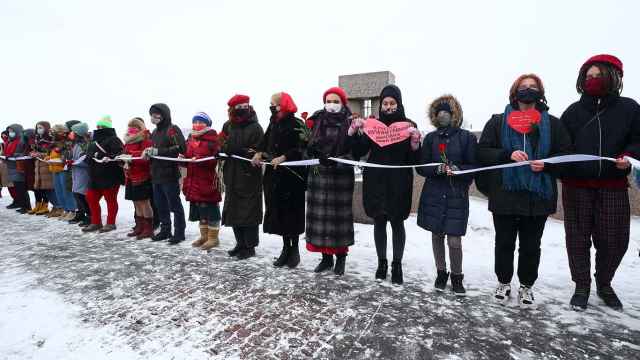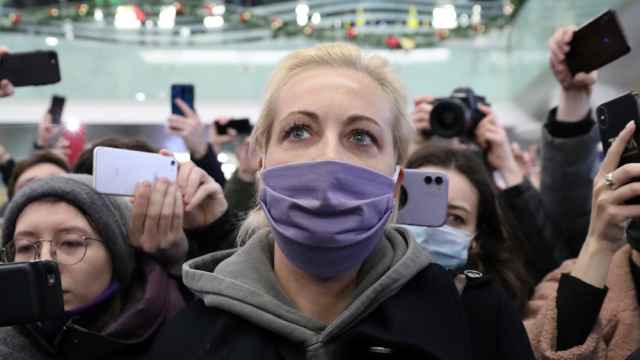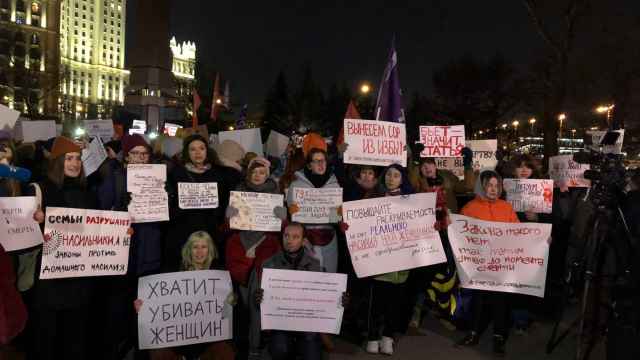In November 2022, President Vladimir Putin assembled a carefully screened group of mothers of conscripts and soldiers in the Kremlin. The scene of harmonious conviviality — where the women drank tea and listened with obsequious respect as Putin dominated the conversation — stands in sharp contrast to the pictures that had once made the mothers of Russian soldiers famous. From 1989 to about 1995, the Committee of Soldiers’ Mothers of Russia was a force to be reckoned with.
The Committee was founded as one of the first independent grassroots organizations in the Soviet Union. Its emergence and quick growth were a response to the many abuses happening in the Soviet military, which had long been an open secret but found confirmation in the new glasnost style of revelatory journalism. Soon mothers all across the Union demanded far-reaching rights from the all-powerful Soviet state and military.
The committee was widely supported by the Soviet public, who were shocked by the catastrophically high rates of accidents and deaths in a non-combatant army caused by neglect or internal violence. The images that went around the world then were of angry mothers picketing outside garrison gates with signs denouncing the armed forces’ lack of transparency and accountability. In 1995, the highly publicized March to Grozny was not only a rebuke to the Russian military authorities: by including Chechen mothers, it also became a sharp criticism of the war.
And yet the two scenes are intimately linked culturally and historically. The mere fact that Putin bothered to bring mothers to the Kremlin at all is a direct result of the political earthquake the Soldiers’ Mother’s Committee caused during perestroika and afterward. It was then that mothers became a force to which politicians and military commanders had to pay more than lip service.
In turn, the Committee of Soldiers’ Mothers could only rise in prominence during perestroika because it built on a very solid cult of motherhood developed over many decades of Soviet history. During Stalin’s pivot towards conservative values in the 1930s, mothers came to hold an esteemed position in the Soviet values system. While Marxist theory and revolutionary practice had disparaged the family as a structure and aimed to liberate women from their role as mothers and housekeepers, Stalin’s drive towards Soviet consolidation saw the resurrection of these normative forces, albeit safely packaged as elements of the new Soviet modernity.
Stalinist mothers became guardians of Soviet families, which in turn would guarantee the socialist future. Rather than representing the bourgeois world order, Soviet mothers would work in tandem with the state to raise the next generation of Soviet people, including the next generation of Soviet soldiers. The 1930s also saw a strong militarization of everyday life, and the lives of young people in particular. The iconography of the Great Patriotic War both underlined and sentimentalized the integral role of mothers in the Soviet military complex. Mothers were depicted both as grieving victims and fiery avengers, indicating that they were both models to their sons in their devotion to the cause as well as objects that needed to be defended.
Mothers continued to play a central role in military propaganda in the post-war years, with one moment achieving particularly valent status in literary and cinematic representations: the farewell of the conscript’s mother at the gate to the barracks — the very barrack gates which would become their main protest site during perestroika. Officially, this moment symbolized a handover from the biological mother to the stately Motherland. In reality, these scenes started to acquire strong overtones of anxiety about violence and loss.
It still came as a surprise to the authorities, however, when the mothers turned the propaganda image on its head and started to put their sons’ wellbeing above the demands of the state. They were helped by a sympathetic press whose ever-more critical coverage of what was happening behind the closed barracks gates galvanized more mothers into action and secured public support. According to data published in 1990, 15,000 soldiers died between 1985-1989 as a result of injuries sustained in avoidable accidents or from dedovshchina — a ritualized form of hazing inflicted on younger recruits and between ethnic groups within the army.
It is no coincidence that the early leaders of the soldiers’ mothers’ movement more often than not came from, or had a connection to, ethnically marginalized communities. The first woman to head the organization and who shaped it for many years was Maria Kirbasova, an ethnic Kalmyk who had been deported as a child during Stalin’s time. Her Buddhist faith gave the Committee a pacifist face from the very beginning and attracted soldiers’ mothers from other ethnic minorities. The movement also had a particularly strong branch in Ukraine, where the first demand was not to send Ukrainian conscripts outside the borders of the republic, since young Ukrainians often found themselves bullied when posted in Russia. These pragmatic demands were thus almost immediately joined by demands laced with current politics.
Under Kirbasova, the Committee of Soldiers’ Mothers implicitly but unequivocally aligned itself with the centrifugal powers that emerged in the republics of the Soviet Union. It expressed its solidarity with the mothers of Lithuania when civilians were killed during skirmishes in January 1991 and expressed support for the independence movements elsewhere. Its highest profile it reached with the outbreak of the first Chechen War in 1994. Kirbasova organized a march to Grozny in March and April of 1995, which was followed by the domestic and foreign press as it went from one army checkpoint to another, demanding the right to reach Grozny. On the way, its participants, which included a number of Buddhist monks, met and embraced Chechen mothers who had lost children in the massacre of Samashki committed just days before by the Russian army.
All of this seems not only impossible but unthinkable today. It would be akin to Russian mothers marching to Bucha and embracing their Ukrainian counterparts.
There are still Committees of Soldiers’ Mothers in Russia, but they do not act as a unified force, let alone take a pacifist stance beyond their very personal demands. These committees were beaten into submission many years ago. After revelations about injured Russian soldiers from Ukrainian battlefields arriving in St. Petersburg hospitals in 2014, the local branch was labeled a “foreign agent.”
There was conspicuous silence from the committees after the full-scale invasion of Ukraine in February 2022. When Putin had to resort to mobilization to fuel his war of aggression, journalists sought out activists, but never came back with much of a story to write. The success of the Soldiers’ Mothers Committees in the late 1980s and early 1990s was due not only because of their personal worries and grief but also because they were able to mobilize large sways of society into their shared pain. This has not yet proved to be the case in today’s Russia.
Yet the spirit of women defending their sons is still alive, despite a massive propaganda campaign to bring back Soviet values, substituting motherhood with motherland. It is not the Committees that carry the torch anymore but younger women who know how to use social media effectively and who are fighting for their husbands rather than their sons. Already in 2022, the Council of Mothers and Wives, a grassroots organization from Samara, called Putin out over the fate of men who had disappeared after being sent to Ukraine. There have been protests by mothers and wives in several minority regions, including Bashkortostan and Dagestan. Most recently, the telegram channel “The Way Home” has transcended the digital sphere and organized protests on the 500th day of the full-scale war.
Since then, Alexei Navalny has died in a prison in the Far North. His wife Yulia Navalnaya has publicly vowed to take up her late husband’s cause and continue fighting for a better Russia. She is the latest in a line of women who have become visible on behalf of their husbands. Women, especially young women, have been a prominent force in anti-war protests and actions.
While Putin seems to be able to keep down the kind of protests that shook up the military in the late 1980s, he cannot prevent a gendered aspect from creeping into his struggle to keep power. He is heading a collective of old men being confronted by younger women who are not afraid to stare the regime in the face. The optics are not in Putin’s favor. Indeed, the cult of the mother and of women as the true defenders of the Motherland, so carefully preserved from Soviet times, might ultimately swing against him.
A Message from The Moscow Times:
Dear readers,
We are facing unprecedented challenges. Russia's Prosecutor General's Office has designated The Moscow Times as an "undesirable" organization, criminalizing our work and putting our staff at risk of prosecution. This follows our earlier unjust labeling as a "foreign agent."
These actions are direct attempts to silence independent journalism in Russia. The authorities claim our work "discredits the decisions of the Russian leadership." We see things differently: we strive to provide accurate, unbiased reporting on Russia.
We, the journalists of The Moscow Times, refuse to be silenced. But to continue our work, we need your help.
Your support, no matter how small, makes a world of difference. If you can, please support us monthly starting from just $2. It's quick to set up, and every contribution makes a significant impact.
By supporting The Moscow Times, you're defending open, independent journalism in the face of repression. Thank you for standing with us.
Remind me later.


